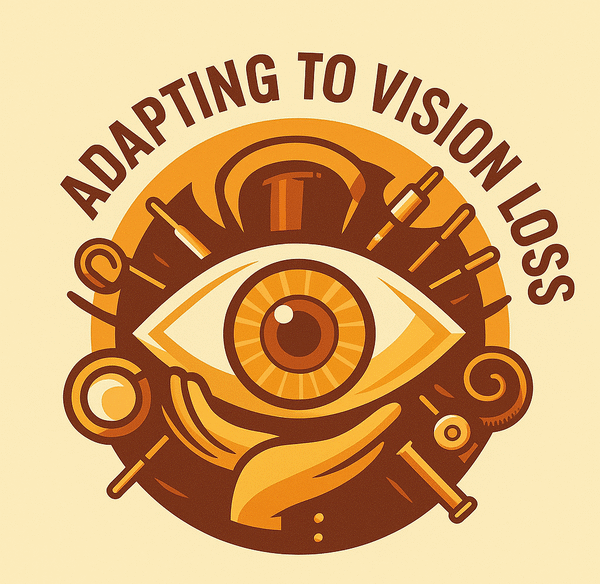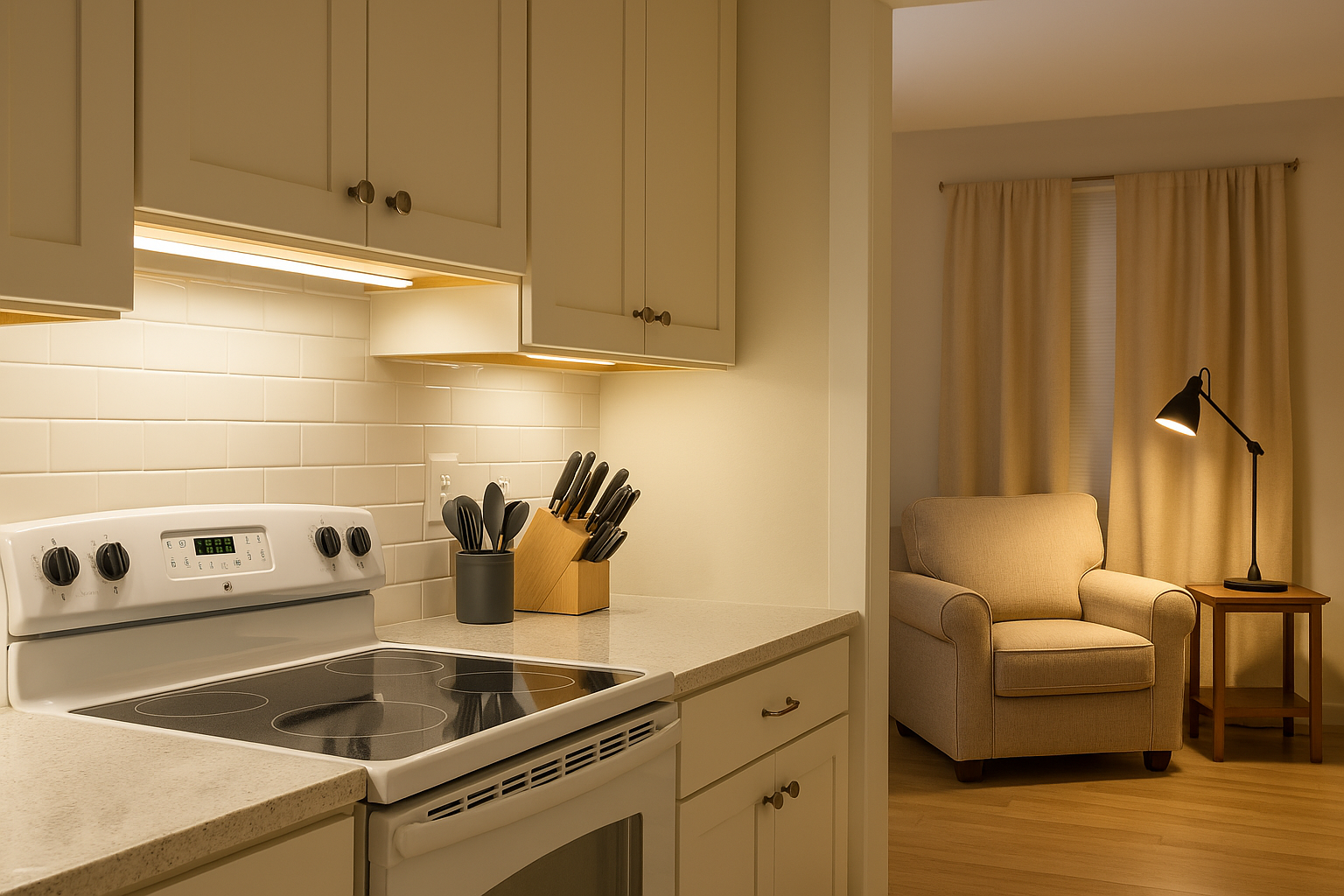How a few small changes transformed my kitchen, living spaces, and confidence at home.
💡 Why Lighting Matters for Low Vision
Living with vision loss has taught me that lighting is more than just a way to brighten a room — it’s a tool for independence and safety. The right light makes everyday tasks easier, reduces eye strain, and helps prevent accidents.
But here’s the key: it’s not just about adding “more” light — it’s about having the right type of light, in the right place, with the right controls.
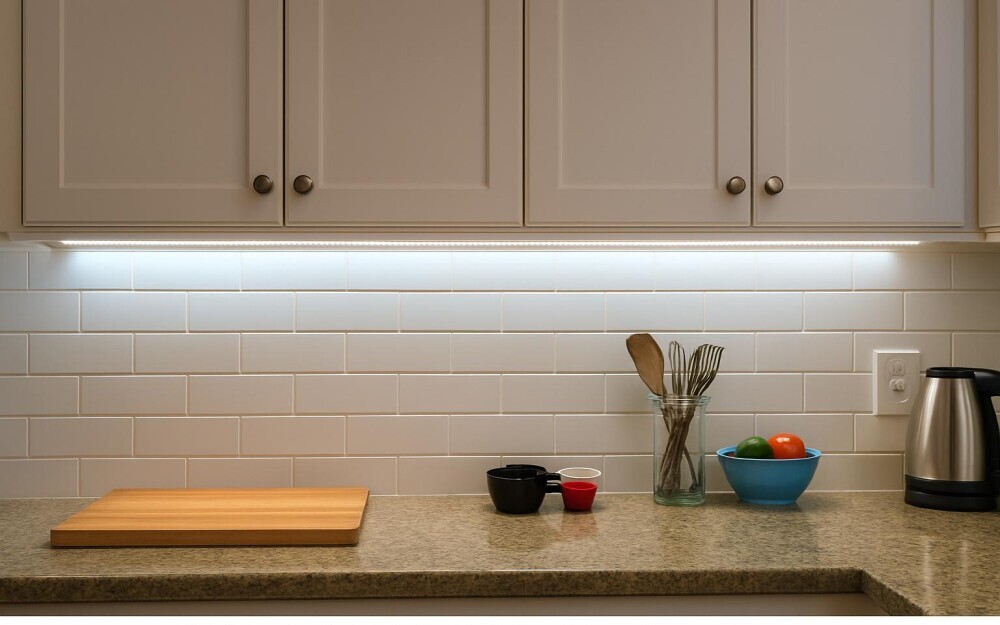 Under-cabinet rope lighting combined with a reflective backsplash creates an even, low-glare work surface in the kitchen.
Under-cabinet rope lighting combined with a reflective backsplash creates an even, low-glare work surface in the kitchen.
🍳 My Favorite Upgrade: Under-Cabinet Lighting in the Kitchen
One of the most valuable lighting solutions I’ve found is under-cabinet lighting in my kitchen. It focuses light exactly where I’m working — on the counters — without casting shadows.
What made it even better was pairing it with a light-reflective backsplash. The backsplash bounces light back across the counter, making it easier to see when I’m chopping vegetables, measuring ingredients, or reading a recipe.
After trying a few options, we finally settled on rope lighting that plugs into a standard outlet. It’s flexible enough to run under the cabinets, around corners, and along edges, creating an even wash of light across the entire workspace — and it didn’t require any hardwiring.
Many plug-in under-cabinet lighting systems can also be voice-controlled through Alexa or other smart assistants, so I can turn them on or off without fumbling for a switch. This is especially handy when my hands are full or I’m moving around the kitchen quickly.
Tip: Rope light is available in both warm and cool white tones — choose a cooler tone (around 4000–5000K) for task lighting to maximize clarity. You can find a variety of easy-to-install under-cabinet lighting options on Amazon that plug into a standard outlet and provide even, bright illumination.
🛋 More Real-Life Lighting Fixes That Worked for Me
Living Room: I replaced a standard shaded table lamp with an adjustable-arm LED lamp next to my favorite reading chair. The direct, focused light is much easier on my eyes and lets me read comfortably for longer.
Bathroom: I added a motion-sensor nightlight just inside the door. It turns on automatically when I enter, so I don’t have to search for a switch in the dark.
These little upgrades cost less than a dinner out, but they make daily routines easier and safer.
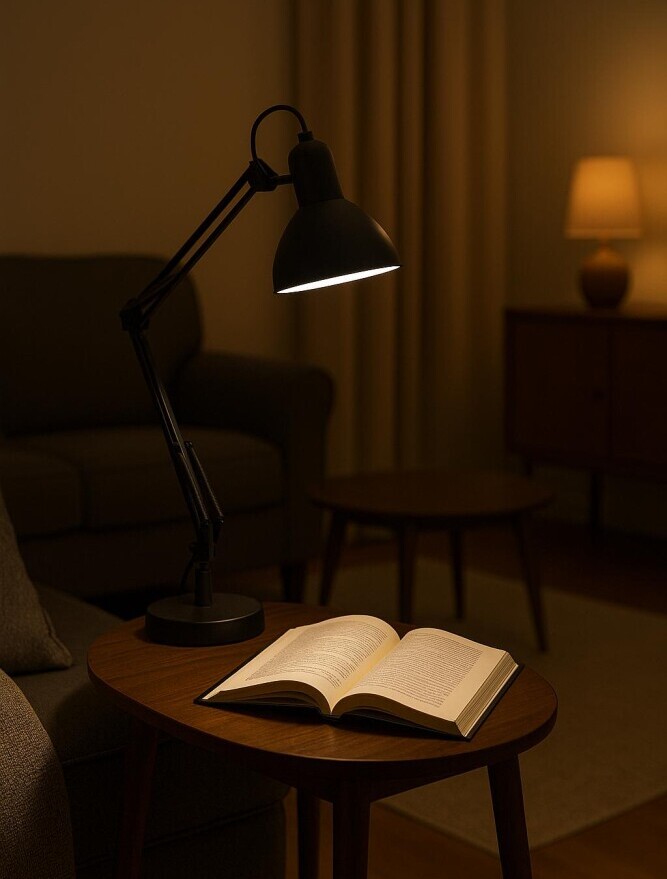 Task lighting, like an adjustable-arm LED lamp, provides focused illumination for reading, crafting, or other close-up activities.
Task lighting, like an adjustable-arm LED lamp, provides focused illumination for reading, crafting, or other close-up activities.
🛠 Other Lighting Fixes That Make a Big Difference
🔍 1. Task Lighting Where You Need It Most
- Adjustable-arm desk lamps for reading, crafts, or paperwork.
- Clip-on lights for sewing, puzzles, or hobby tables.
- Motion-sensor nightlights in hallways, bathrooms, and bedrooms.
- Adjustable LED task lamps on Amazon offer focused, customizable light for reading, crafting, or other close-up activities.
💡 2. Brighter Bulbs — The Right Kind
- LED bulbs between 4000K and 5000K (labeled “daylight” or “cool white”) for clearer visibility.
- A high Color Rendering Index (CRI) for more accurate color perception.
🏠 3. Layered Lighting in Living Spaces
- Combine ceiling fixtures with floor or table lamps to avoid shadows.
- Dimmable lighting for adjusting brightness to your needs.
- Wall-mounted sconces to light up dark corners without using floor space.
🔦 Choosing the Right Lighting for Your Needs
When deciding what lighting to add or change, consider:
- Purpose: Is this for cooking, reading, safety, or general room light?
- Control: Do you want it to be voice-activated, touch-activated, or on a timer?
- Placement: Will it light your workspace without causing glare?
- Cost & Effort: Can it be a plug-in option, or does it require installation?
🔋 Lighting That Works When the Power Goes Out
One type of lighting I keep on hand isn’t for everyday use — it’s for emergencies. Rechargeable lamps and even rechargeable light bulbs can be a lifesaver during a power outage.
Some rechargeable bulbs are designed to work just like regular bulbs in your lamp or fixture. When the power goes out, they automatically switch to battery power and can run for several hours. Rechargeable lamps are also easy to move from room to room, so you can still navigate your home safely without fumbling for flashlights or candles.
For anyone with low vision, having backup lighting ready to go is more than just convenient — it’s about maintaining safety and independence when the unexpected happens.
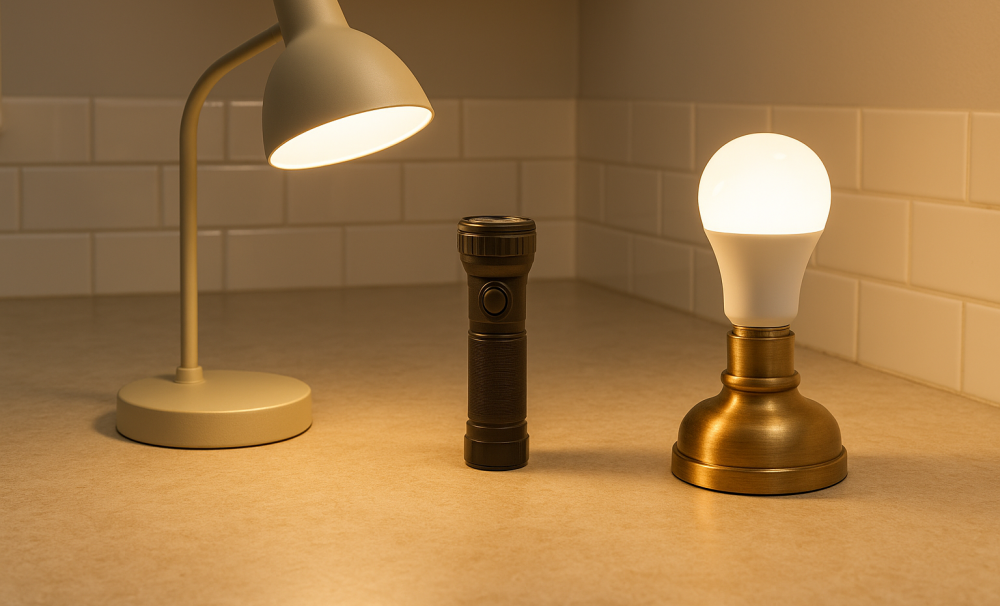 Rechargeable lamps and bulbs are an excellent backup for extended power outages — they turn on instantly without fumbling for batteries.
Rechargeable lamps and bulbs are an excellent backup for extended power outages — they turn on instantly without fumbling for batteries.
😎 Glare: The Hidden Enemy
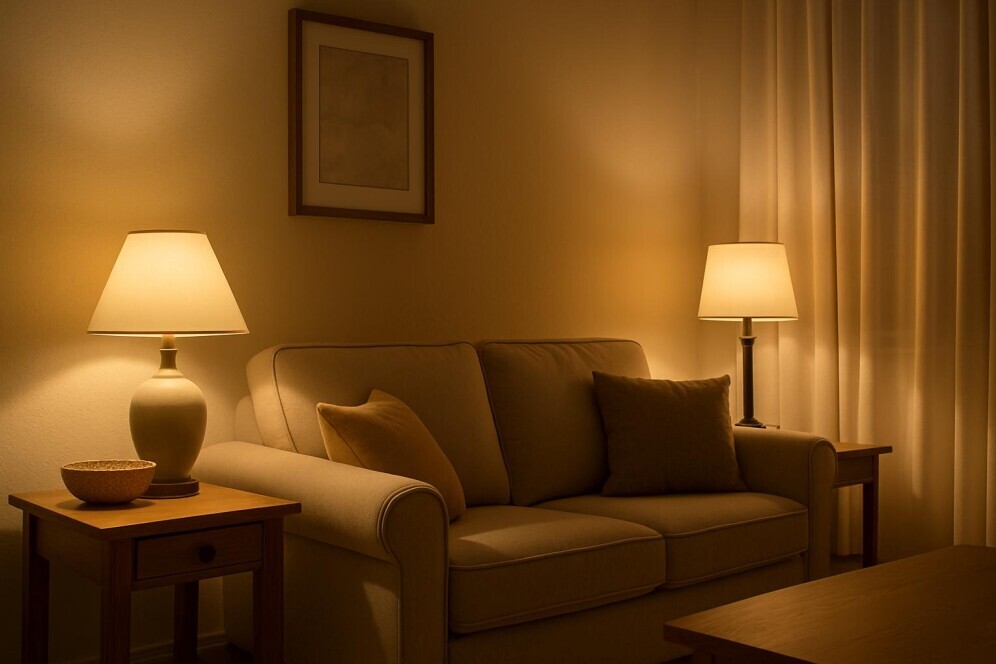 Soft, indirect lighting and glare-reducing shades create a more comfortable environment for those sensitive to bright light.
Soft, indirect lighting and glare-reducing shades create a more comfortable environment for those sensitive to bright light.
Too much glare can be just as challenging as too little light. I’ve learned to:
- Use matte finishes instead of shiny countertops or tile.
- Position lamps so light falls onto a surface, not directly into my eyes.
- Add sheer curtains or blinds to soften harsh sunlight.
✨ Small Changes, Big Accessibility Wins
You don’t need to remodel your home to improve visibility. Even simple upgrades — like swapping out bulbs, adding a lamp where you read, or installing under-cabinet lighting — can make a huge difference.
For me, improving lighting has been about more than just seeing better. It’s about feeling safer, more confident, and in control in my own space.
